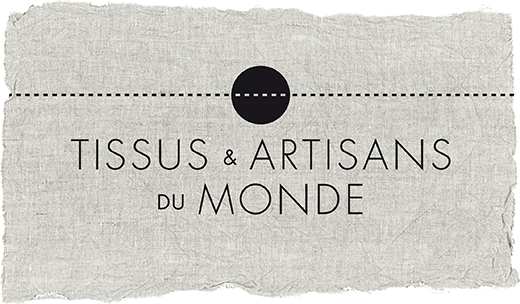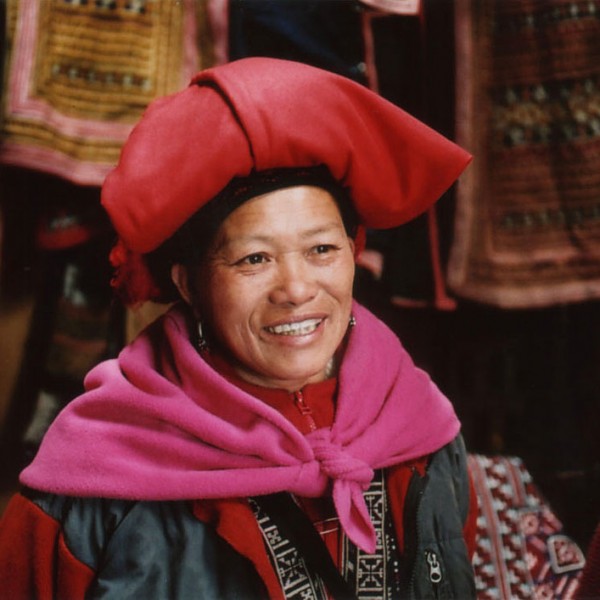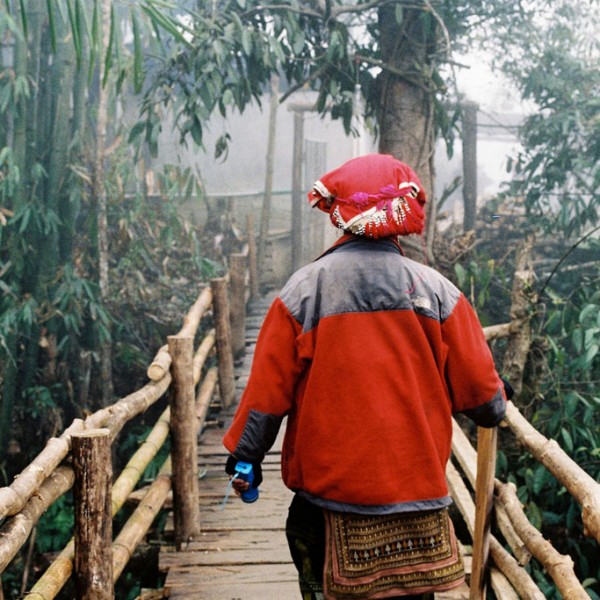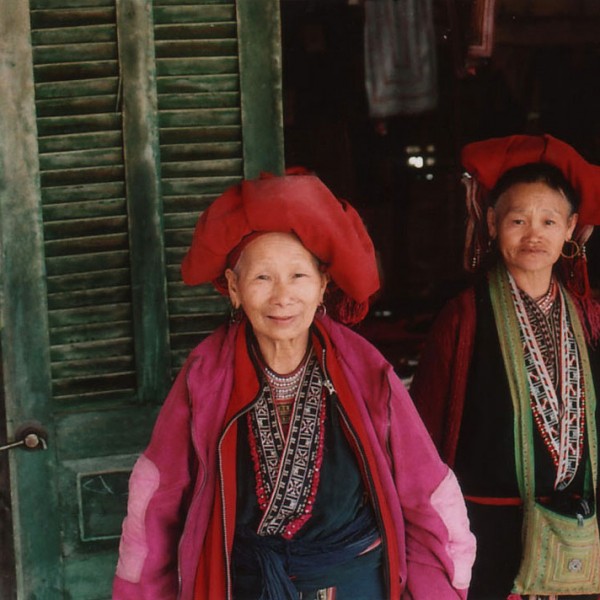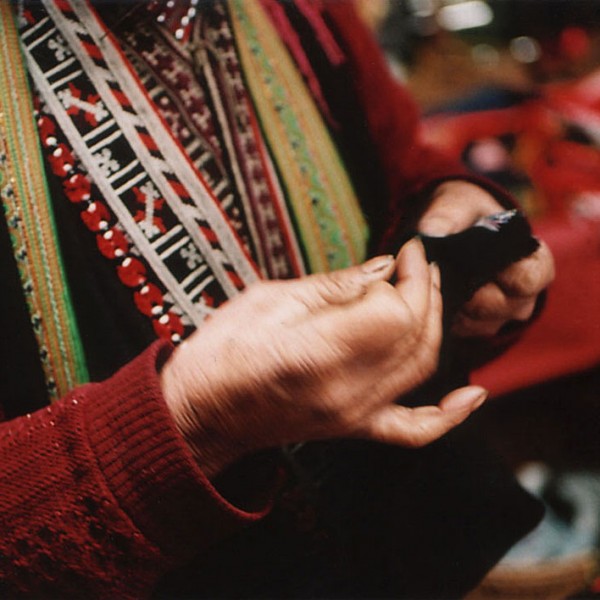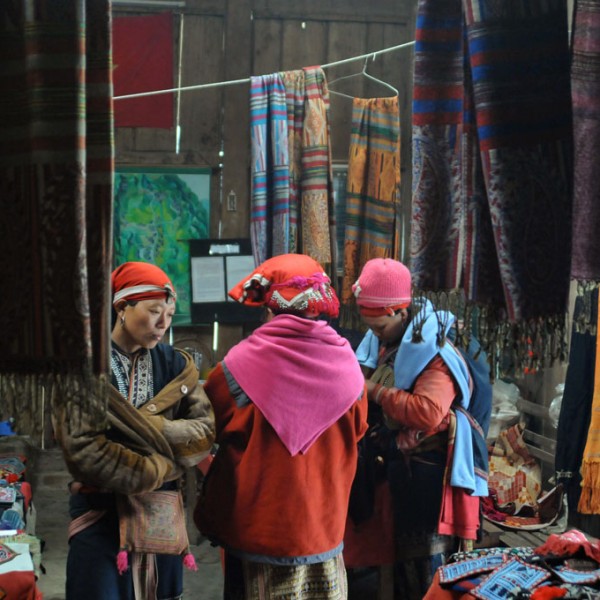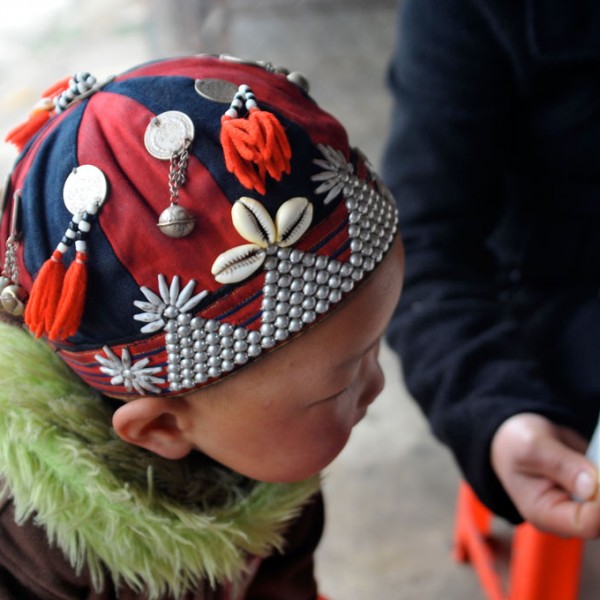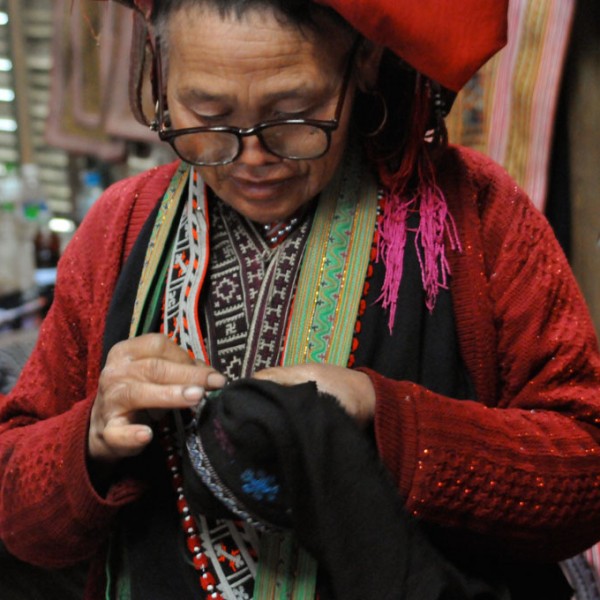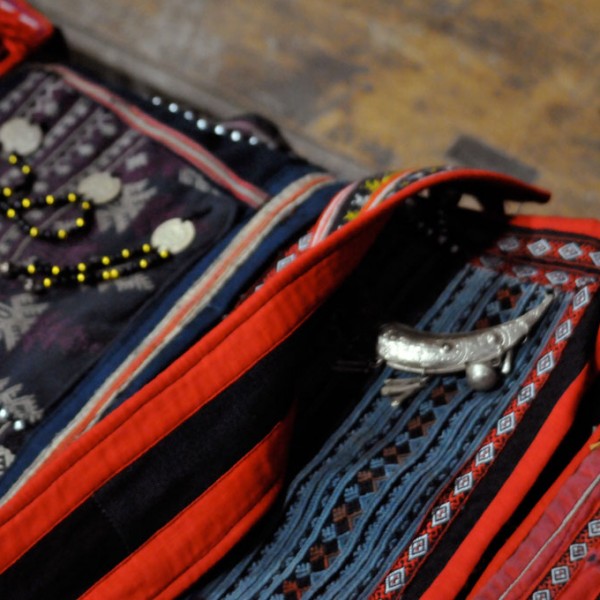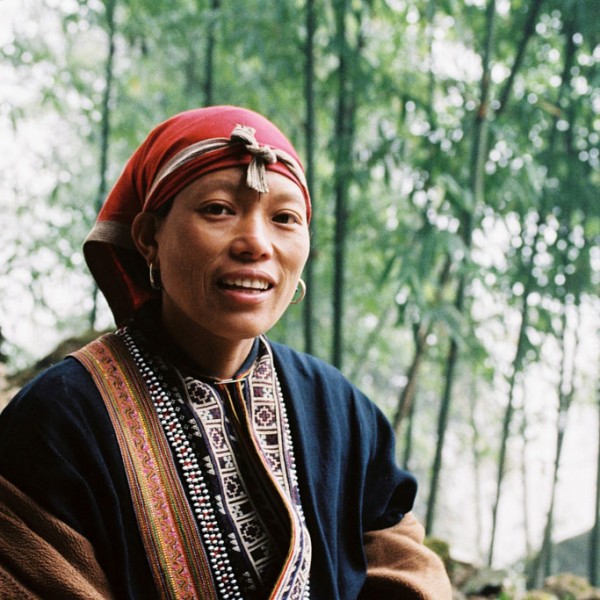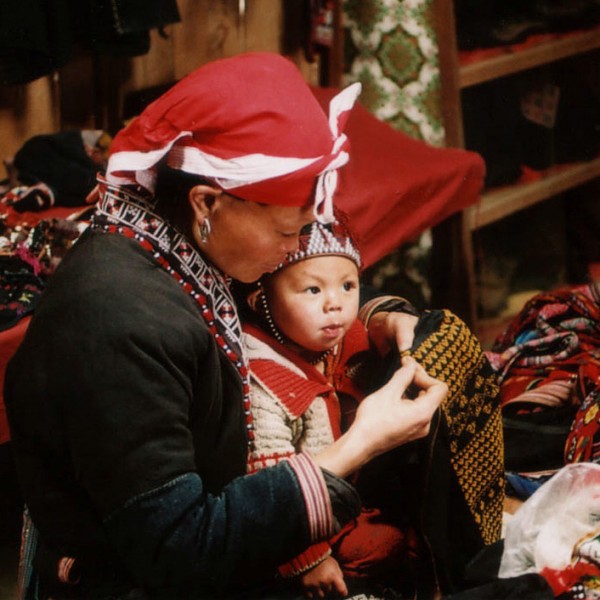In Ta Phin, half an hour drive north of Sapa, the mountain people living conditions are harsh. The landscape is sometimes shrouded in a heavy and persistent fog. There, the Kinh (Vietnamese), Black Hmong and Red Dao communities live all together. Their daily life is punctuated by the work in the rice fields, corn fields and livestock.
Ly May Chan, the chief of the Red Dao tribe, is waiting for me at the entrance of the village. She is a woman with a direct and frank look. She wears a red cap like a stole draped carefully over her head and a warm parka on her traditional costume. Very active in the local community, she is responsible for taking care of hosting tourists, organizing sales, handling orders of a Vietnamese NGO, which is collaborating with ethnic minorities in the country in order to develop and market handmade textiles.
Ms. Chan has always been living in Ta Phin, like her parents before her. The Red Dao people, originally from China, have gradually settled down in Vietnam, from the 12th century until today. The Black Hmong community is more discreet. Less involved in tourism development throughout the region, they are facing more difficult living conditions than their Red Dao neighbours.
Ly May took me for a visit to the textile cooperative. I was greeted by several women in Dao costume embroidering. Embroidery is second nature to these women who have been practicing since their very young age, daily, almost mechanically. On the shelves, there are tons of cotton and hemp pieces of great finesse, in shades of red, indigo, saffron. These garments, belts and bags are decorated with fine brocades, appliqué braids, geometric and sinuous embroidery or silver jewels.
Very good saleswomen, the embroiderers are curious and smiling. From the little old lady to the young mother, each one has an English witty remark, on the lookout for visitors and their potential purchases. I was by myself on that day with them. Selling their textile works is a way for them to encourage the preservation and transmission of their craft skills and traditions, but, also and above all, to improve their income and escape poverty.
Ly May and the Red Dao embroiderers
TA PHIN, VIETNAM
